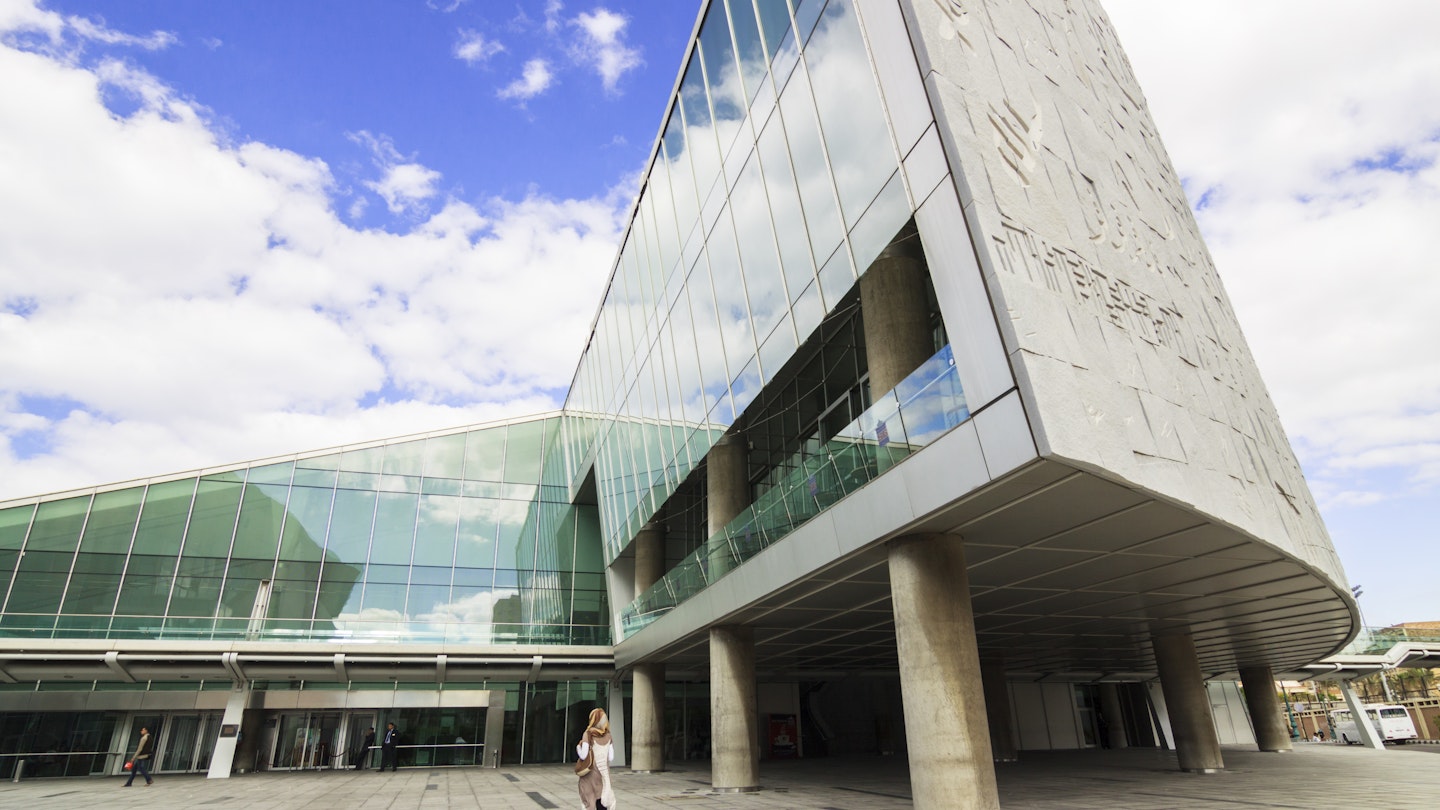Exploring Egypt’s Contemporary Culture and Future
Egypt’s archaeological abundance typically positions it as a portal into the past rather than a gateway to the future. However, Egypt’s heartbeat is young, vibrant, and innovative, coursing through the veins of an impassioned generation that is a force to be reckoned with.
Although it may be brimming with antiquities, Egypt is far from being antiquated. Its contemporary culture, alternative tourism, and urban development challenge the misperception that ancient history and modern innovation are mutually exclusive. To the contrary – it’s this juxtaposition of antiquity and modernity that invites both locals and visitors to experience Egypt’s storied past through the lens of its dynamic present.
Contemporary Culture and Timeless Tradition
For three consecutive years, the Pyramids of Giza have served as the majestic backdrop for Art D’Égypte’s flagship contemporary art exhibition, Forever is Now. In 2022, the ancient wonder was transformed into a cinematic runway for the Dior Men’s Fall-Winter 2023 fashion show. Through timeless experiences where ancient history meets modern artistic expression, Egypt’s thriving creative industry has become a key player in capturing its cultural heritage and conveying its narrative across the global stage.
This same creative powerhouse orchestrated the regal Pharaohs’ Golden Parade of 2021, where 22 royal mummies were ceremoniously transported from the Egyptian Museum in Cairo to the National Museum of Egyptian Civilization for its grand opening. These 18 kings and four queens now tell one of the many carefully curated stories about the complex relationship between Egyptians and their land throughout history.
Just outside the National Museum of Egyptian Civilization (NMEC) is Le Lac Du Caire, the majestic grounds where stories are unfolding about modern Egyptians. Here, people gather to celebrate innovations of contemporary Egyptian civilization – from launches of lavish real estate developments to summits that attract creative minds and aspiring hopefuls from across the Middle East and North Africa (MENA) region.
Alternative Egypt: Adventure, Sustainability, and Ecotourism
Meanwhile, within the winding wadis of Sinai and the Red Sea coast, an alternative travel story has begun to emerge. Egypt’s adventure travel and trail tourism offer off-the-beaten-path experiences both literally and figuratively. Desert plains, iconic peaks, sand seas, and deep gorges draw adventure enthusiasts to explore Egypt’s secluded natural beauty.
Since 2015, community tourism projects like the award-winning Sinai Trail have been inviting boldly curious adventurers into Egypt’s natural landscapes through sustainable travel initiatives that honor timeless tribal cultures. What began as a 220km (137-mile) route involving three Bedouin tribes has now expanded into a 550km (342-mile) trail involving eight Bedouin tribes: the Tarabin, Muzeina, Jebeleya, Awlad Said, Gararsha, Sowalha, Hamada, and Alegat.
The Sinai Trail paved the way for the development of the Red Sea Mountain Trail in 2019, managed by members of the Khushmaan clan of the Maaza Bedouin tribe. Egypt’s trails sparked further developments across the region, including the Wadi Rum Trail in Jordan and the Bedouin Trail connecting Petra to Luxor through territories of seven Bedouin tribes.
Developed with the mission to create sustainable tourism economies for local Bedouin communities, trail tourism also aims to practically preserve Bedouin heritage that’s become endangered as locals leave the desert for nearby urban communities. Through these trails, visitors are welcomed into the lands and lives of local tribes who now have the opportunity and reason to share their history, culture, and knowledge with those who’ve come to experience this other side of Egypt.
Honoring Heritage amid Future-focused Development
Suburban sprawl over the past two decades has led to a mass exodus toward tranquil residential spaces like New Cairo and Sheikh Zayed City, meanwhile, in the heart of Egypt’s bustling metropolis, downtown Cairo is undergoing yet another regeneration.
Downtown Cairo hasn’t stopped changing since its urban transformation in 1870, which turned Cairo into the Paris of the East and attracted renowned architects from around the globe. Today, this area remains an epicenter for creativity, change, and innovation – the soul of the city where artists, entrepreneurs, innovators, and enthusiasts converge to revitalize its storied past and create a vibrant future.
For the past decade, downtown Cairo has been rediscovering its identity as it stands in the tension between past and present, preservation and progress. Visitors walking through downtown Cairo see facades of monumental buildings that hold a wealth of stories within their storeys. Many of these iconic buildings, which have witnessed tireless transformations, now serve as hubs for Egypt’s burgeoning entrepreneurship ecosystem, creative industry, and arts scene. Behind these historic facades, Egypt’s future is being crafted.
Marrying Past and Future
Egypt stands on the brink of becoming an epicenter of human creativity and innovation. At this moment in history, this cradle of ancient civilization has the opportunity to preserve its past while sculpting the future its legacy deserves. At this crossroads is an impassioned generation of Egyptians who are curators of its past, catalysts of its present, and creators of its future.
Egypt invites visitors to step into this crossroads with it, experiencing the country’s rich history and promising future through the lens of its contemporary culture – through the lens of the Egypt of today.
Sponsored by iBestTravel
As a travel entertainment and inspirational media outlet, it is clear that collaboration often incorporates brand sponsors within its efforts.




